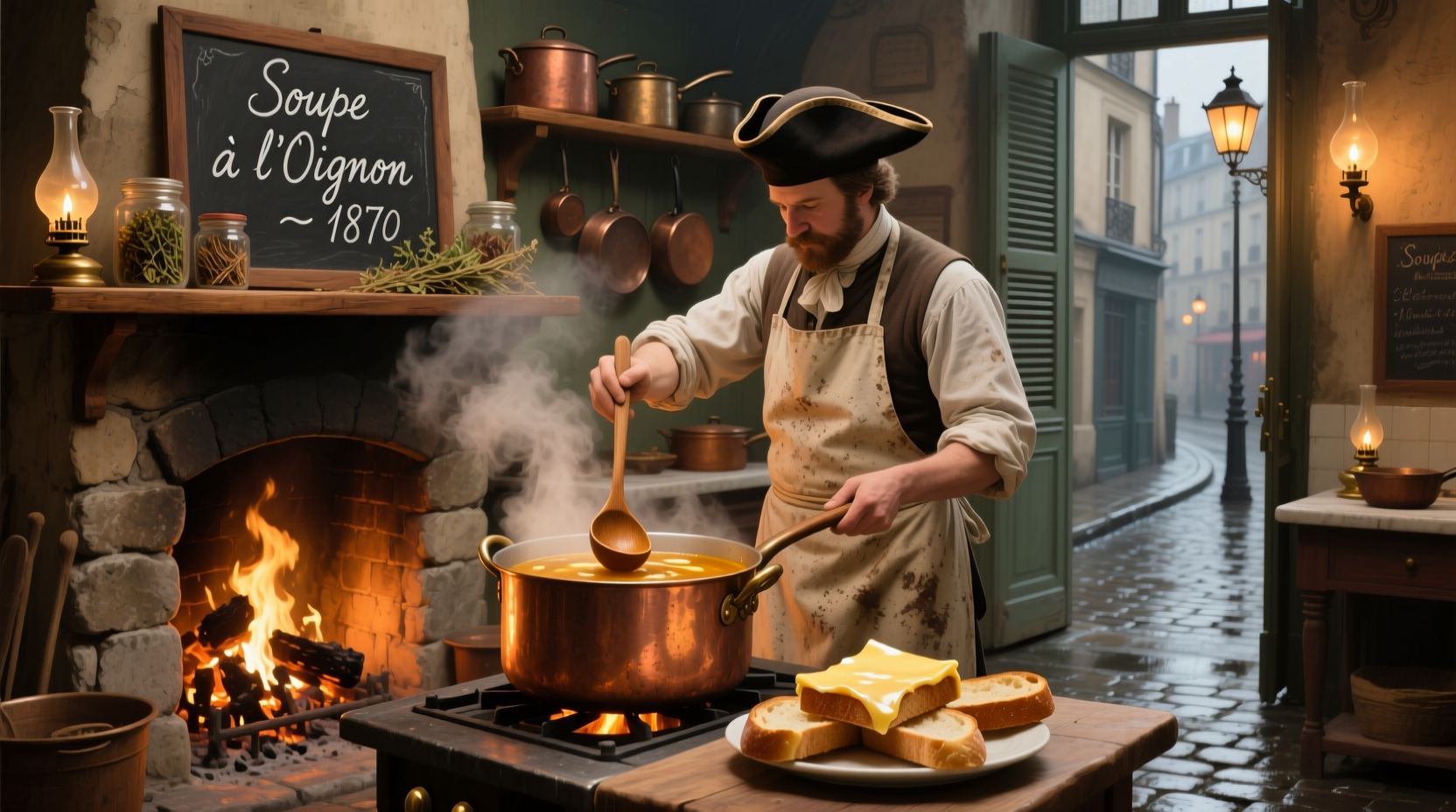Discover how a humble peasant dish transformed into a globally beloved culinary icon through centuries of cultural evolution, economic shifts, and culinary innovation. This comprehensive history reveals surprising connections between Roman soldiers, French royalty, and American GIs that shaped the soup we know today.
The Ancient Foundations of Onion Soup
Long before it earned the “French” designation, onion-based broths formed the foundation of sustenance across ancient civilizations. Archaeological evidence shows Roman soldiers consumed lippus—a simple boiled onion soup with broth and spices—during military campaigns as early as the 1st century BCE. This practical meal provided affordable nutrition using readily available ingredients. By the Middle Ages, European peasants commonly prepared soupe à l'oignon, a basic broth of onions, water, and stale bread that required minimal resources yet delivered essential calories.
| Era | Key Characteristics | Primary Consumers |
|---|---|---|
| Roman (1st century BCE) | Boiled onions with broth and herbs | Military personnel |
| Medieval (5th-15th century) | Water-based onion broth with stale bread | European peasants |
| 18th century France | Beef broth base with caramelized onions | Working-class Parisians |
| Modern (20th century+) | Rich broth, toasted bread, melted cheese topping | Global culinary enthusiasts |
How French Cuisine Claimed the Dish
The transformation from peasant fare to national dish began during France's Ancien Régime. Historical records from the Bibliothèque Nationale de France document Louis XV's 1720s tax reforms that made onions affordable to common citizens after previously being taxed as a luxury item. This economic shift allowed Parisian working-class cooks to develop richer preparations using beef broth instead of water. The first documented recipe resembling modern French onion soup appears in Louis-Auguste de Bourbon's 1765 culinary manuscript, featuring caramelized onions simmered in beef stock—a significant upgrade from medieval versions.
By the 19th century, the dish gained culinary legitimacy through chef Jean-Louis-François Rostain's 1851 cookbook L'Art Culinaire Français, which standardized the preparation method still recognized today. The iconic cheese-topped presentation emerged in Parisian bistros during the Belle Époque era (1871-1914), when resourceful chefs began using readily available Gruyère cheese to enhance flavor and create visual appeal.

Cultural Journey to Global Prominence
French onion soup's international fame began with American soldiers stationed in France during World War I. The U.S. National Archives document how troops stationed near Paris developed a taste for the warming dish during harsh winters, with many bringing the recipe home after the war. Its popularity surged in the United States during the 1950s and 1960s, partly due to Julia Child's influential cookbook Mastering the Art of French Cooking (1961), which featured an authentic preparation method.
Contrary to popular belief, the dish's association with France represents culinary diplomacy rather than exclusive origin. Food historians at the Oxford Symposium on Food and Cookery note that similar onion-based soups exist across European traditions—from Germany's Zwiebelsuppe to Spain's Sopa de Cebolla—but France successfully branded the most refined version through strategic culinary marketing during the 20th century.
Authentic Preparation Through the Ages
Understanding the historical context reveals why certain techniques remain essential to authentic French onion soup:
- Caramelization process: Medieval cooks discovered slow-cooking onions developed deeper flavors, a technique perfected in 18th century France
- Bread selection: Originally using stale peasant bread, modern versions specify baguette for its structural integrity when soaked in broth
- Cheese evolution: Early versions used local farmhouse cheeses; Gruyère became standard after Swiss cheesemakers established trade routes with France in the 19th century
- Broth development: The shift from water to meat-based broths reflected improved economic conditions for French workers
Contemporary chefs following traditional methods maintain these historical techniques while adapting to modern palates. The Musée de la Vie Romantique in Paris preserves original 19th century cooking implements used specifically for preparing this dish, demonstrating the specialized tools developed for perfect onion caramelization—a process requiring precise temperature control that hasn't changed in two centuries.











 浙公网安备
33010002000092号
浙公网安备
33010002000092号 浙B2-20120091-4
浙B2-20120091-4